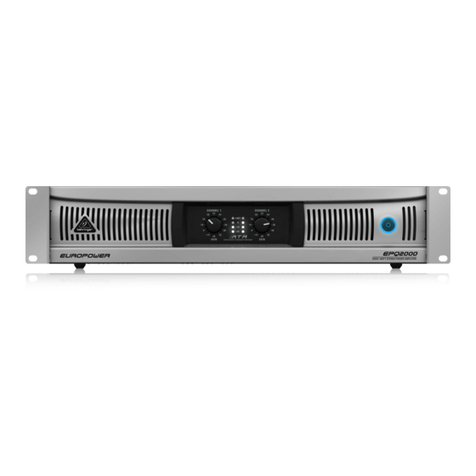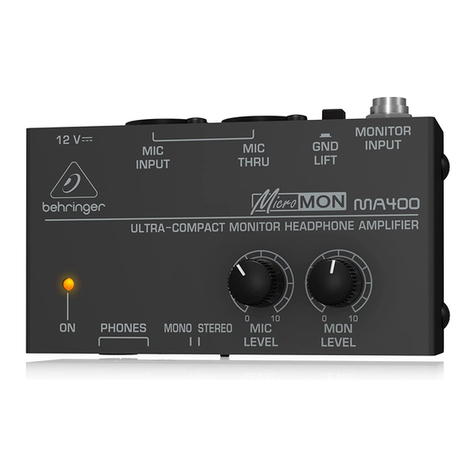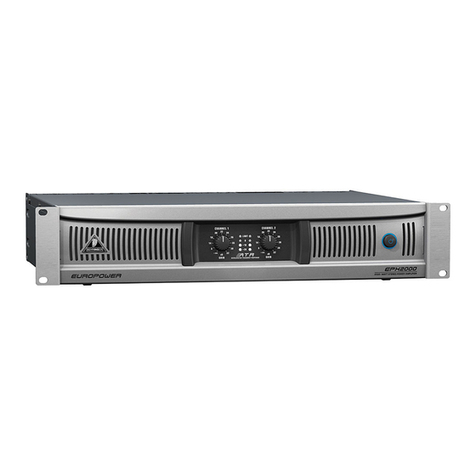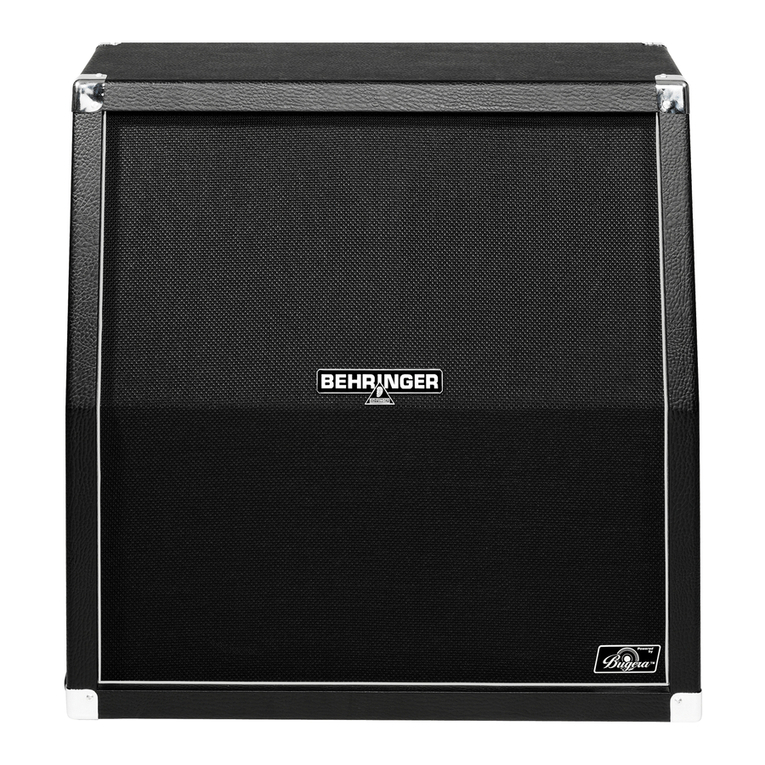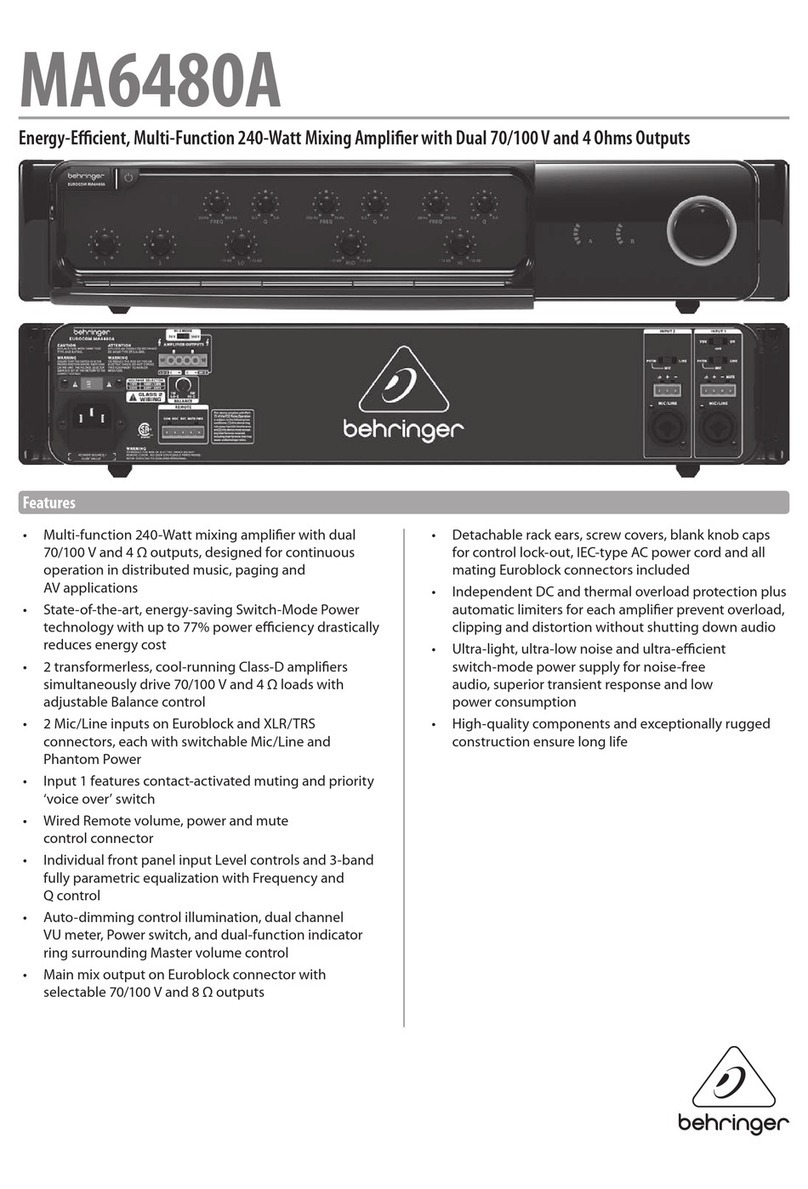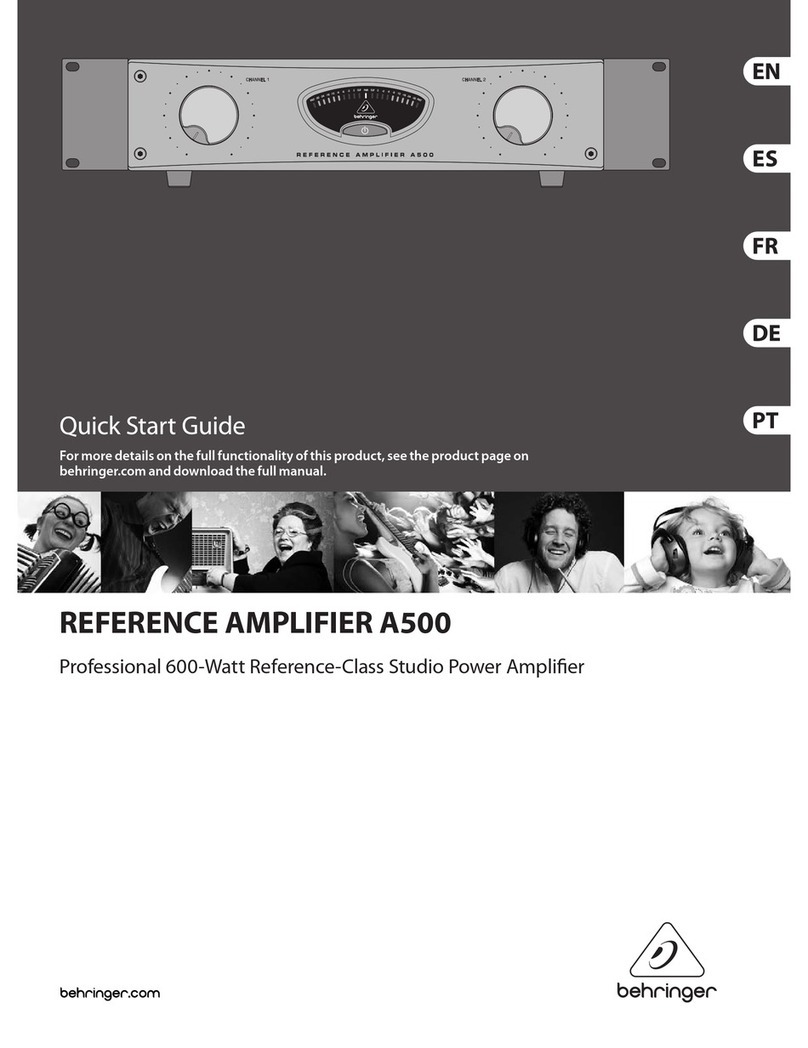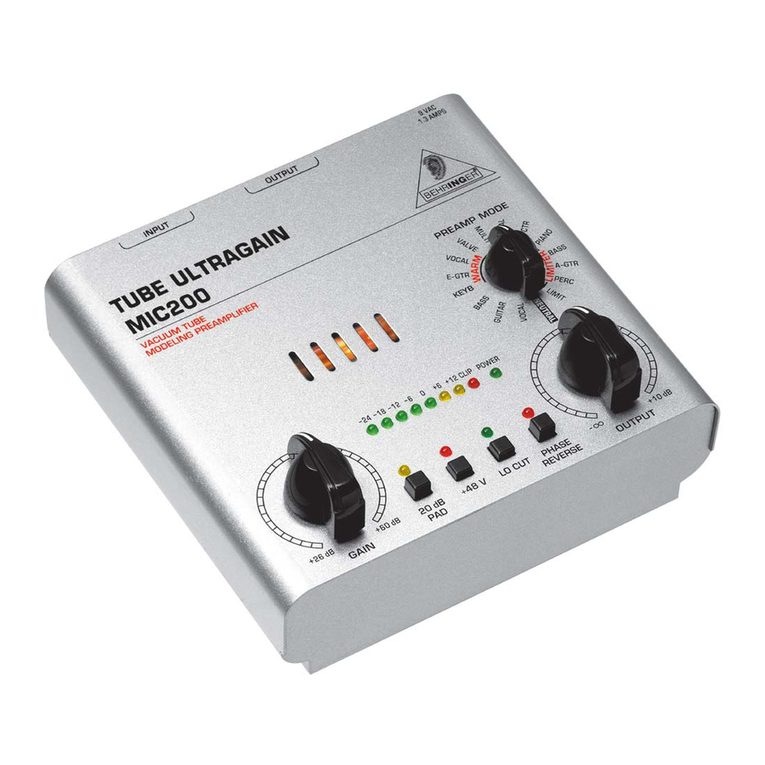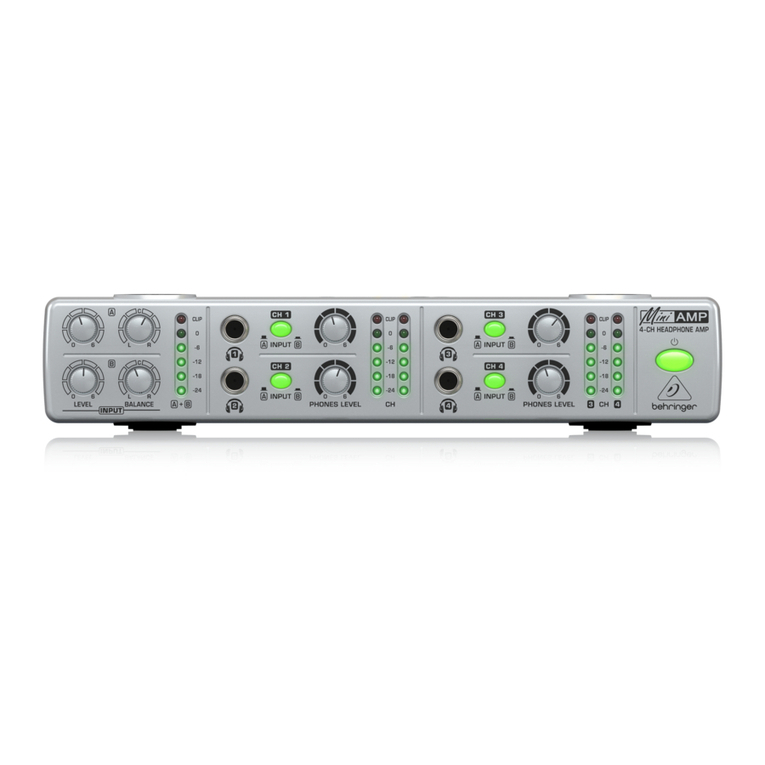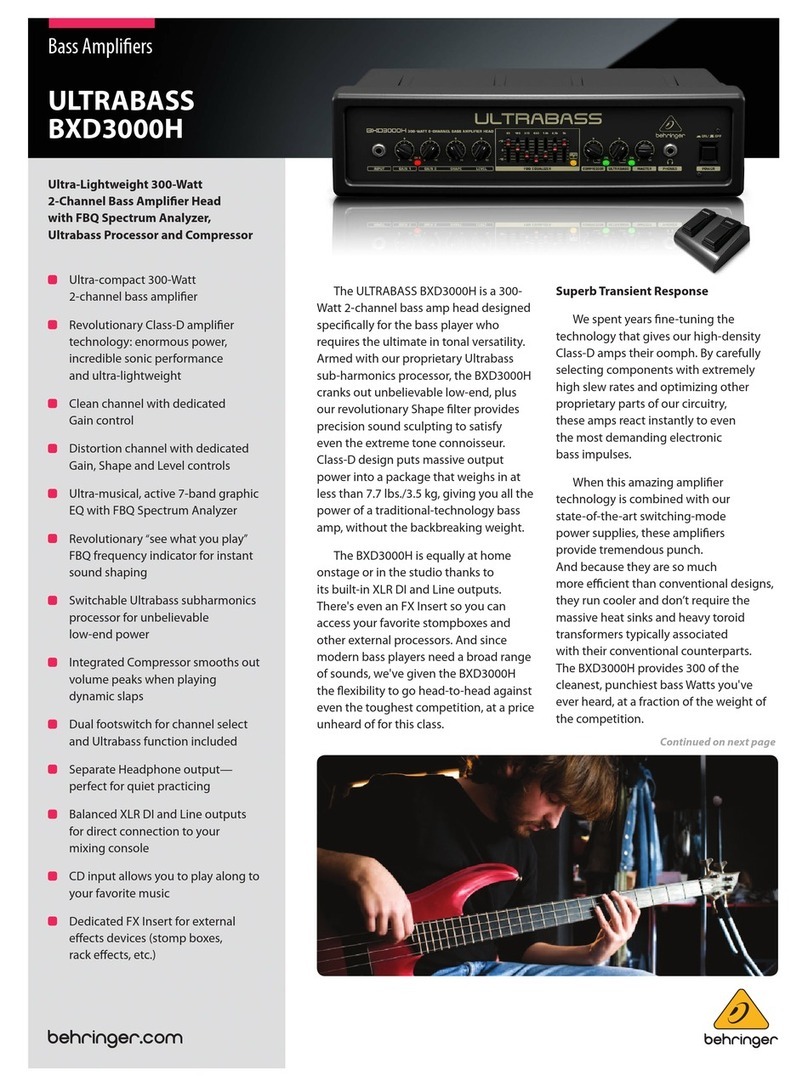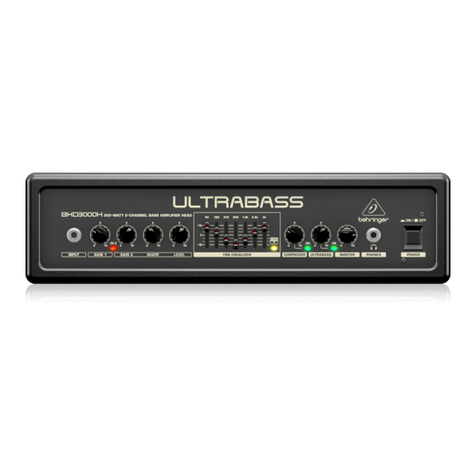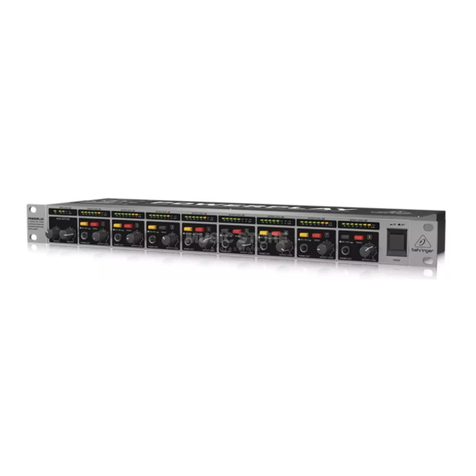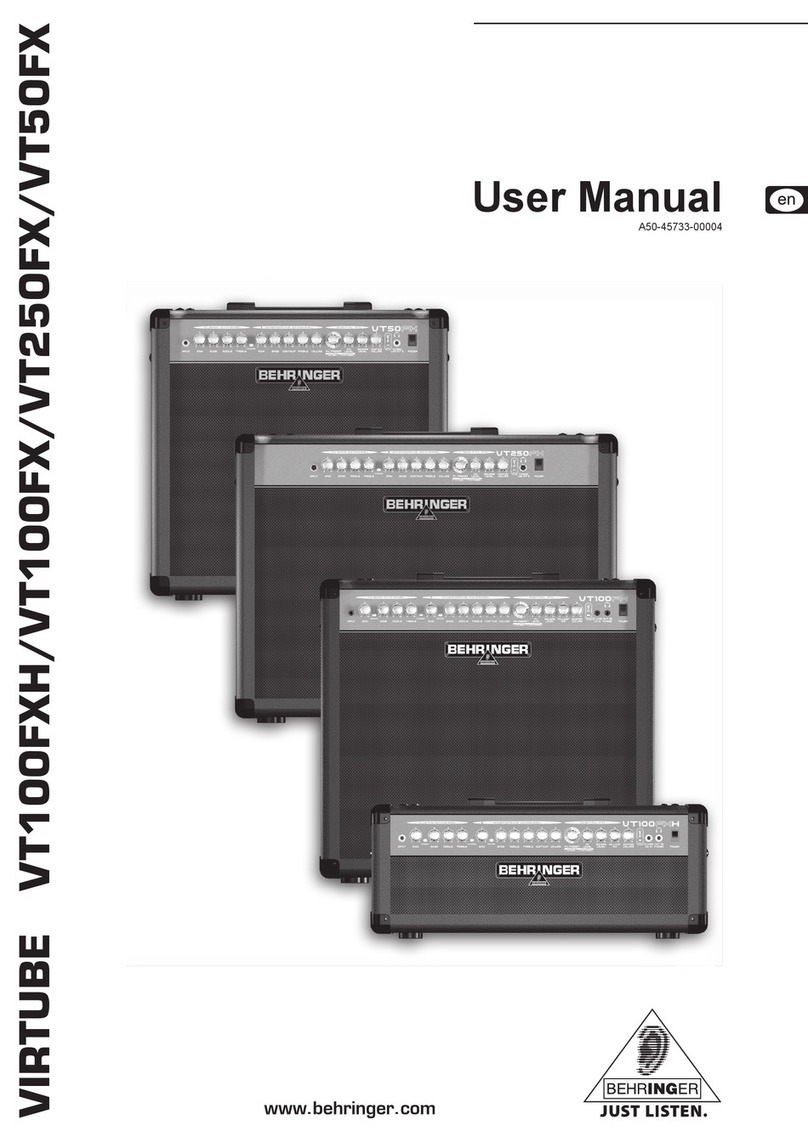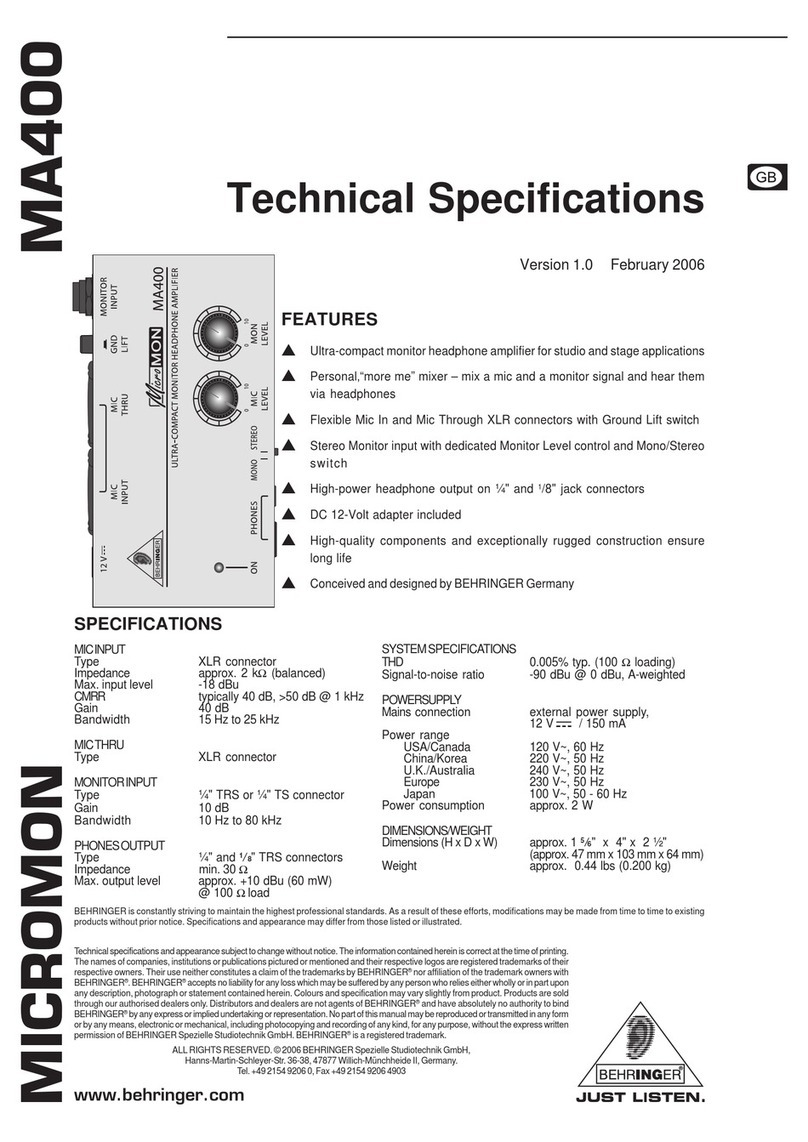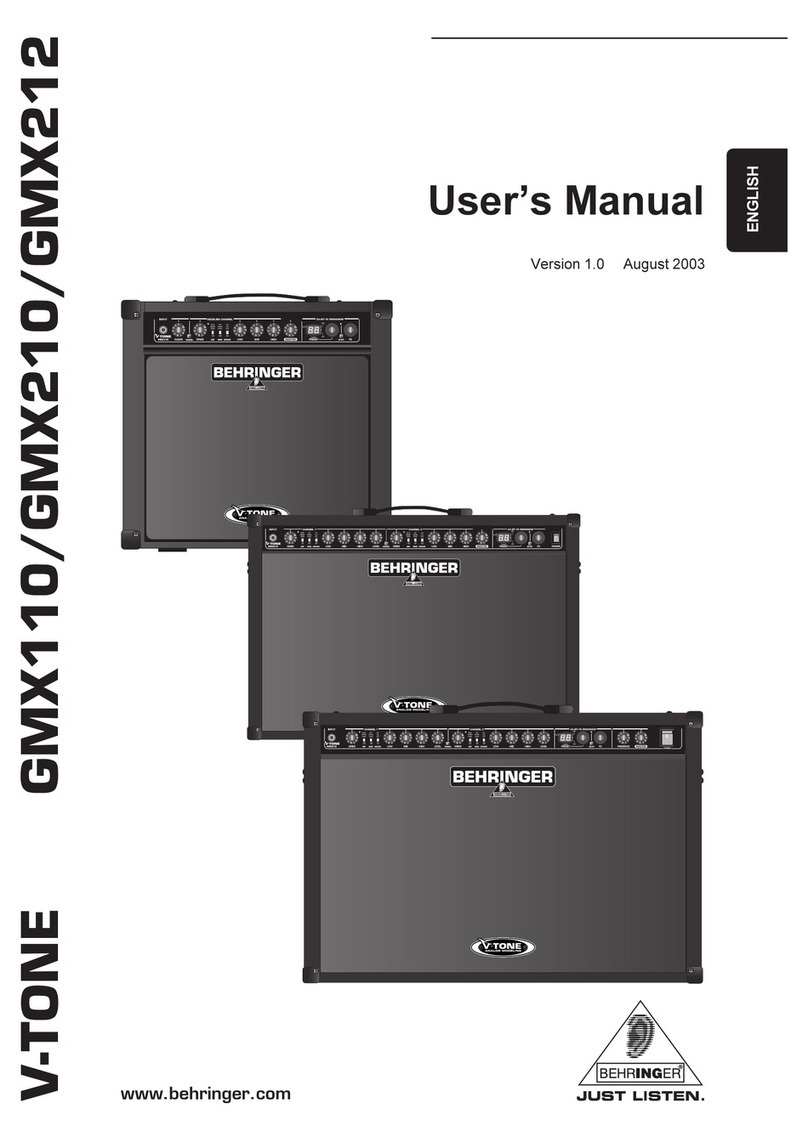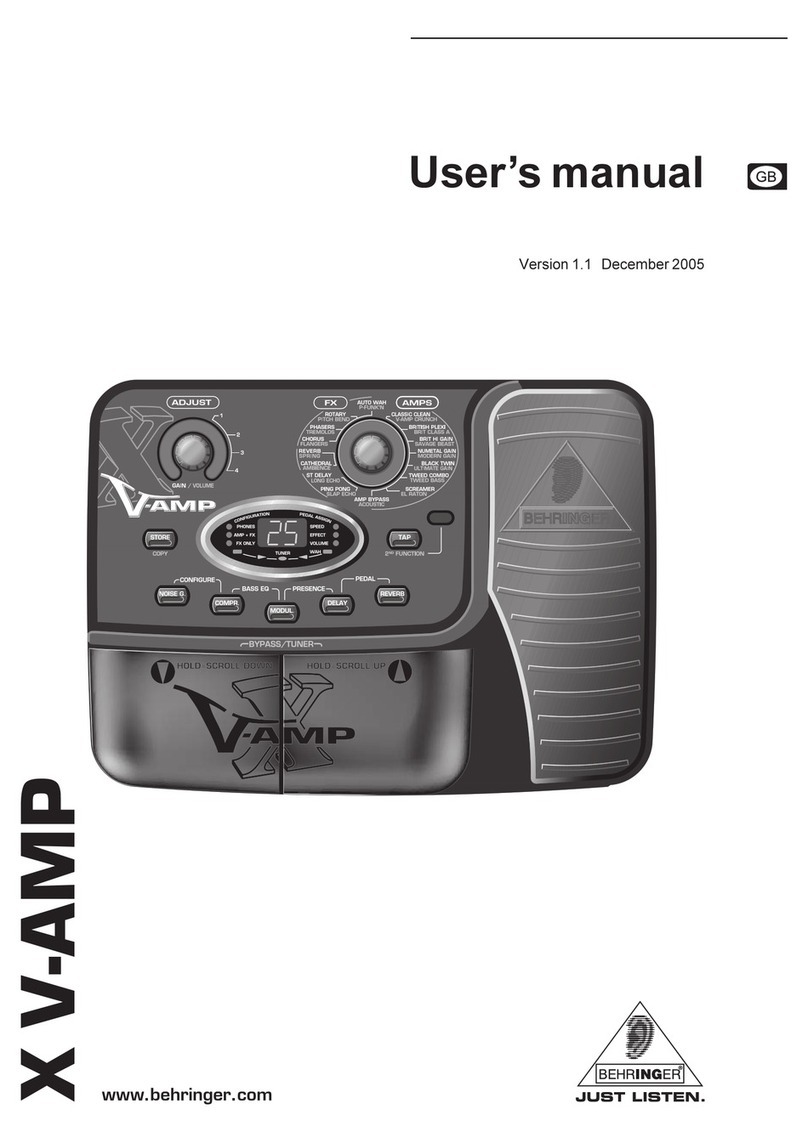6
ULTRAROCGX110
1. INTRODUCTION
Thankyouvery muchforexpressing your confidenceinBEHRINGER products bypurchasingthe ULTRAROC
GX110. With the ULTRAROC, you have acquired a modern Guitar Workstation that sets new standards in
practice amp engineering. When developing the GX110, our top objective was to reproduce the authentic
sound of classical guitar amps as perfectly as we could and combine it with latest DSP technology – while
focusingonanuserinterfacethatcanbeoperatedintuitively.
BEHRINGERisan audio engineering companythathasbeensuccessfully developing productsforstudioand
liveapplicationsfor manyyearsnow.Our range ofproductsincludes microphones andavarietyof 19" devices
(compressors, enhancers, gates, tube processors, headphone amps, digital effects devices, DI boxes, etc.)
as well as various monitoring and P.A. speakers plus professional live and recording consoles. The name of
BEHRINGERstandsforno-compromisequality,fully-featuredproducts and exemplary service – even years
after purchase – as well as sensationally low prices, which allow any ambitious music lovers to make their
musical dreams come true.
We also set great store by flexibility, which has become a particularly important factor in the music business
over the past few years. Modern guitarists need to offer a broad range of sounds, but should still be able to
play in different kinds of applications at short notice: home recording, studio, live concerts. For this reason, it
has always been our prime concern to give you a Guitar Workstation that offers you a complete set of
functions, but can still be operated intuitively and quickly – no matter what kind of style you play.
Unfortunately,conventionalguitarampsareoftennotfullydesignedanddeveloped.Moreover,manymanufacturers
oftraditional-styleguitarampsare somewhat afraid of using state-of-the-art technology. TheULTRAROC,on
theotherhand,is apioneeringguitarampthathasconsiderably morefunctionsthananyconventional2-channel
amp with a built-in spring reverb. Still, you can use the GX110 so that it mimics an excellently sounding
2-channelcomboamp with an–admittedly– good springreverb(exceptfor that“shatter”soundwhen the amp
getsknocked over).However,werecommendthatyoumake yourselffamiliarwith theULTRAROCin fulldetail,
so that you know what each of the many functions does and be able to fully exploit the numerous effects and
controloptions provided.
Astechnologyadvances,you’vegottokeeptrackof latest technological breakthroughs to avoid falling by the
wayside.We,too,have continuously improved this amp and includedmanyofyourvaluablesuggestions.We
have spared neither expense nor effort to test different types of circuitry and speakers until the results gave
uscompletesatisfaction.Afterall, we really want to give you fullydesignedanddevelopedproductsthatmeet
your expectations in every respect. The ULTRAROC shall be an useful tool for years to come, which is why
we’veequippedthe effects modules of ourGuitarWorkstationwithEPROMS that can beupdated.Inthisway,
wecankeepworkingonnewalgorithmsand considering your ideas and suggestions. The resulting software
updates will be made available for free on the Internet, so as to ensure that your amp will never be outdated.
We’vepackedourentire experience into this latest generation ofguitaramps.Manypeoplecontributedto this
project of intense development: studio musicians, collectors of vintage guitar amps, music and guitar lovers
alike. We even invited guitar amp tuning experts to help us develop an amplifier that gives you the best of all
worlds:
sSophisticatedanalogtechnologywitha“feelfactor” only analog technology can provide.
sTheperfectemulationof tube-specific nuances to makeupforthedrawbacksencountered in tube designs
(noise, hum, etc.)
sLatest DSP technology to give you a broad range of modern high-gain and vintage-type effect sounds.
sRuggedandsolidconstructionwhichevenwithstandsroughesthandling.
IIntuitive operation, so that you can focus your mind on what is most important to you: your music!
+This manual first describes the terminology used, so that you can fully understand the
ULTRAROC and its functions. Please read the manual carefully and keep it for future reference.
1. INTRODUCTION
